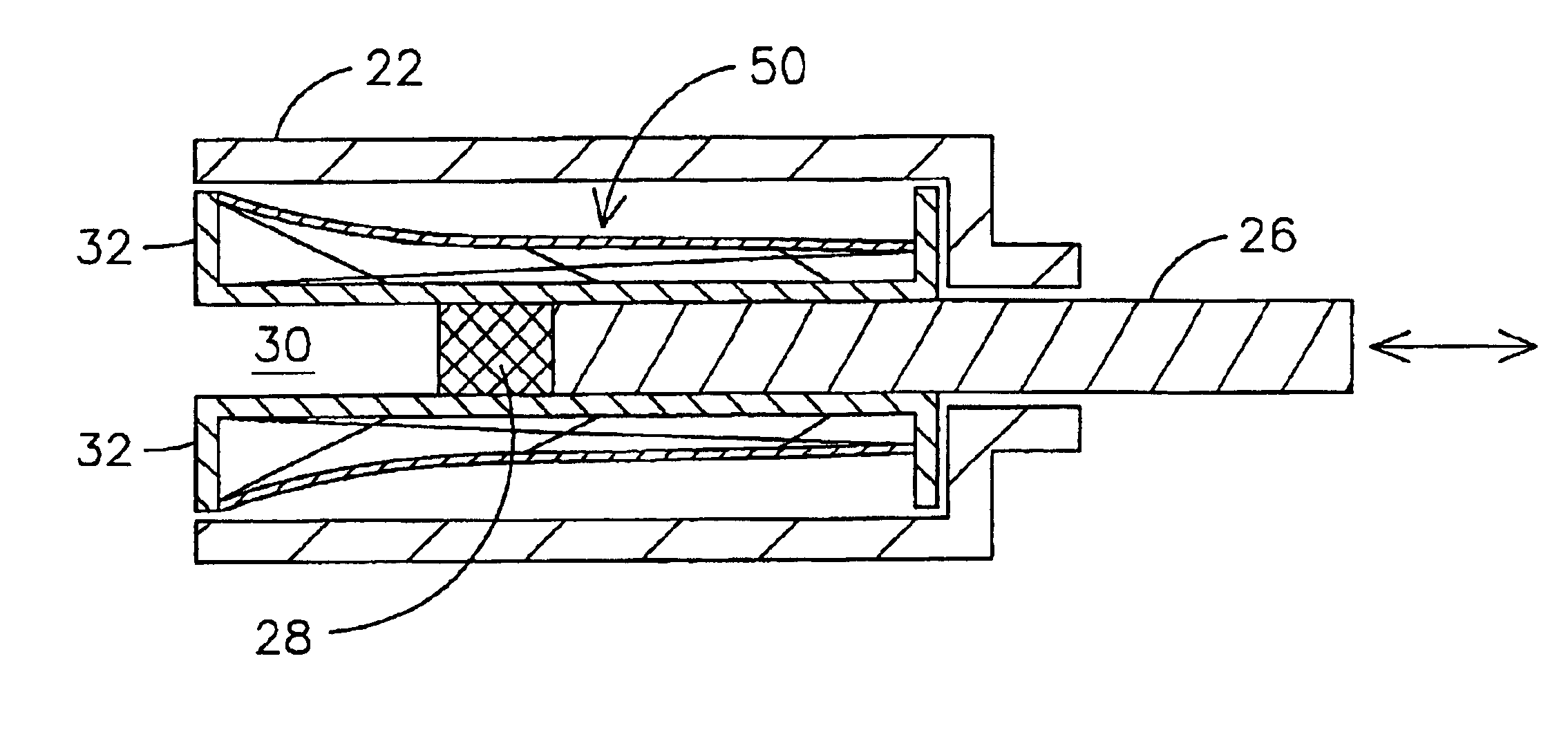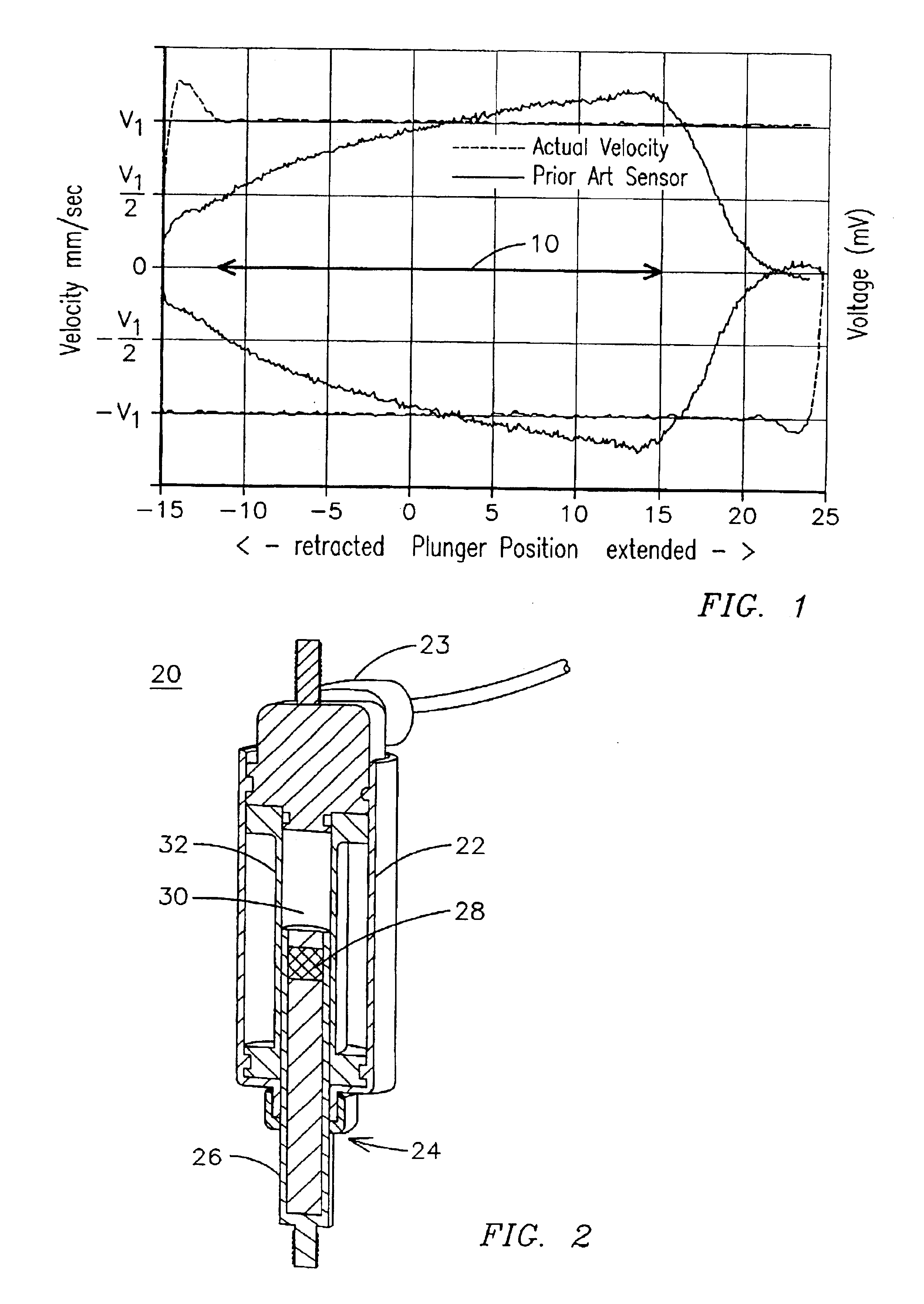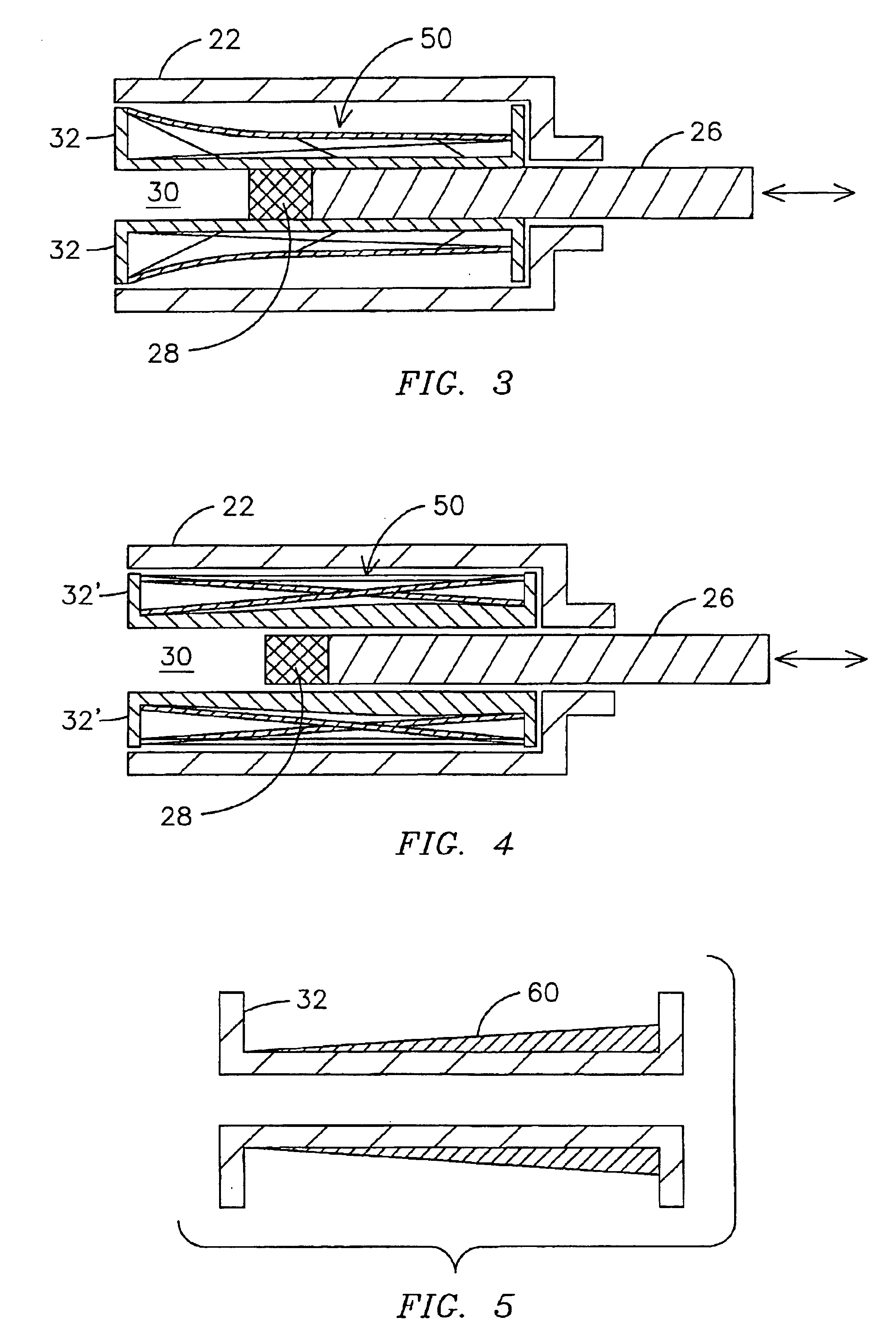Linear velocity sensor and method for reducing non-linearity of the sensor output signal
a linear velocity sensor and output signal technology, applied in the field of linear velocity sensors and methods for reducing nonlinearity of the sensor output signal, can solve the problems of insufficient accuracy to meet high-performance system requirements, additional complexity that incrementally adds to the cost of the sensor, and the limited technique of the first technique, so as to reduce the nonlinearity of the output signal
- Summary
- Abstract
- Description
- Claims
- Application Information
AI Technical Summary
Benefits of technology
Problems solved by technology
Method used
Image
Examples
Embodiment Construction
FIG. 2 illustrates an exemplary embodiment of a linear velocity sensor 20 embodying aspects of the present invention. As illustrated in FIG. 2, a ferromagnetic housing 22 includes an opening 24 for receiving a relatively small, ferromagnetic rod 26 with a magnet 28 mounted on one end of rod 26. The opposite end of housing 22 may be closed to the ferromagnetic plunger by the housing of an interface connector 23. As will be appreciated by those skilled in the art, since the housing is made up of ferromagnetic material, the housing functions as a flux concentrator of the magnetic flux from magnet 28. The rod essentially constitutes a plunger slidable or extendable through an axially-extending bore 30 in a spool 32.
As shown in FIGS. 3 and 4, a coil 50 is wound around the spool 32. The coil is positioned between the plunger 26 and the housing 22, and, since each of such components is made up of ferromagnetic material, they jointly cooperate to form an electromagnetic magnetic circuit tha...
PUM
 Login to View More
Login to View More Abstract
Description
Claims
Application Information
 Login to View More
Login to View More - R&D
- Intellectual Property
- Life Sciences
- Materials
- Tech Scout
- Unparalleled Data Quality
- Higher Quality Content
- 60% Fewer Hallucinations
Browse by: Latest US Patents, China's latest patents, Technical Efficacy Thesaurus, Application Domain, Technology Topic, Popular Technical Reports.
© 2025 PatSnap. All rights reserved.Legal|Privacy policy|Modern Slavery Act Transparency Statement|Sitemap|About US| Contact US: help@patsnap.com



